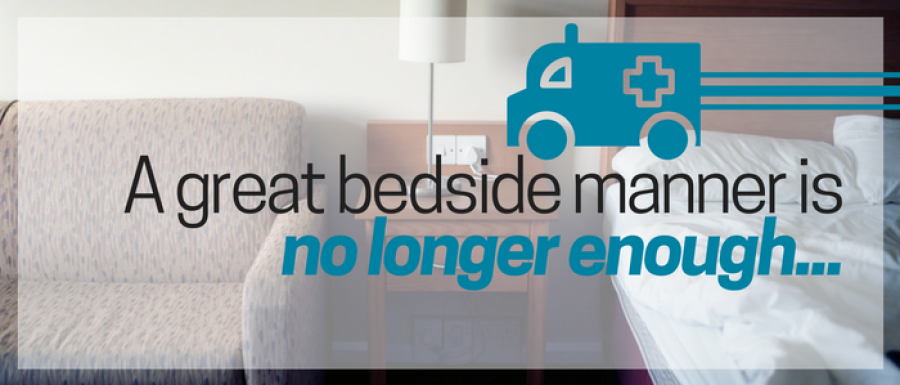
As the landscape of modern medicine quickly changes to a model more in line with traditional consumer businesses, patient loyalty has become a primary focus. Once upon a time, a doctor’s bedside manner might be the largest drawing point for patients. While a good bedside manner is still a great asset, it’s simply not enough to meet the evolving needs of the healthcare consumer. Patient-centered care offers better engagement than traditional models, which leads to higher patient compliance and satisfaction.
[FREE E-BOOK] How To Build A Patient-Centered Medical Practice
In most circles, patient engagement has overshadowed bedside manner. Where bedside manner was strictly the way the physician interacted with the patient, patient engagement takes a whole process approach. It’s not just how the physician interacts with the patient, but the overall engagement from every point of contact. When you think about this in today’s terms, your patient engagement should encompass everything from interactions before the initial visit through billing and all contact points in between. If it’s difficult to schedule appointments, understand bills, or discuss issues with the the entire staff, you’re losing the game of patient engagement.
Why Patient Engagement Builds Loyalty
In regards to the healthcare consumer, not only are increasing deductibles forcing patients to pay a larger portion of their medical bills, but many are also facing drastically increased premiums. With this in mind, they’ve become exceptionally savvy consumers when it comes to their treatment. Patients no longer find a doctor and stick with that physician forever. They may find that they need to change providers because their insurer doesn’t cover the provider. They may also be bargain shopping for more affordable care because, quite honestly, it’s expensive. When considering how much of an investment patients are making in their care, healthcare organizations need to realize that many areas of convenience and engagement can be considered to make the service as advantageous as possible.
HOW TO BUILD A PATIENT-CENTRIC MEDICAL PRACTICE [Download E-Book]
Loyal patients often refer the practice to friends and through online venues. They can also be counted on to stick with the practice, even if there may be cheaper options. Here are some areas of engagement to consider from the patient’s point of view:
- Transparency. For patients who are paying a higher premium for service, it’s important that there is the highest level of transparency in treatment. Patients simply can’t be billed the balance after insurance payment because the balance can be much higher than they might comfortably afford. Most patients view the ability to schedule billing as a great convenience in their medical providers.
- Web Portals / Apps. Today’s healthcare consumer is as on-the-go. Offering a web portal or mobile app so that patients can easily schedule appointments and pay balances, as well as have access to pertinent health information, offers them a great advantage and keeps them engaged with your practice.
- Contact Preference. When possible, it’s ideal to contact patients through the portal they prefer. This might be email, phone, or text.
- Front Desk Customer Service. The front desk personnel often makes a bigger impact on the patients than the physician does. No matter the size of the organization, it’s important that there’s a protocol in place for all personnel to foster engagement in every interaction.
Building loyalty in your healthcare consumer base means investing time to meet their needs. Patient engagement has been shown to improve revenue cycle management and patient compliance, allowing for better outcomes overall.


